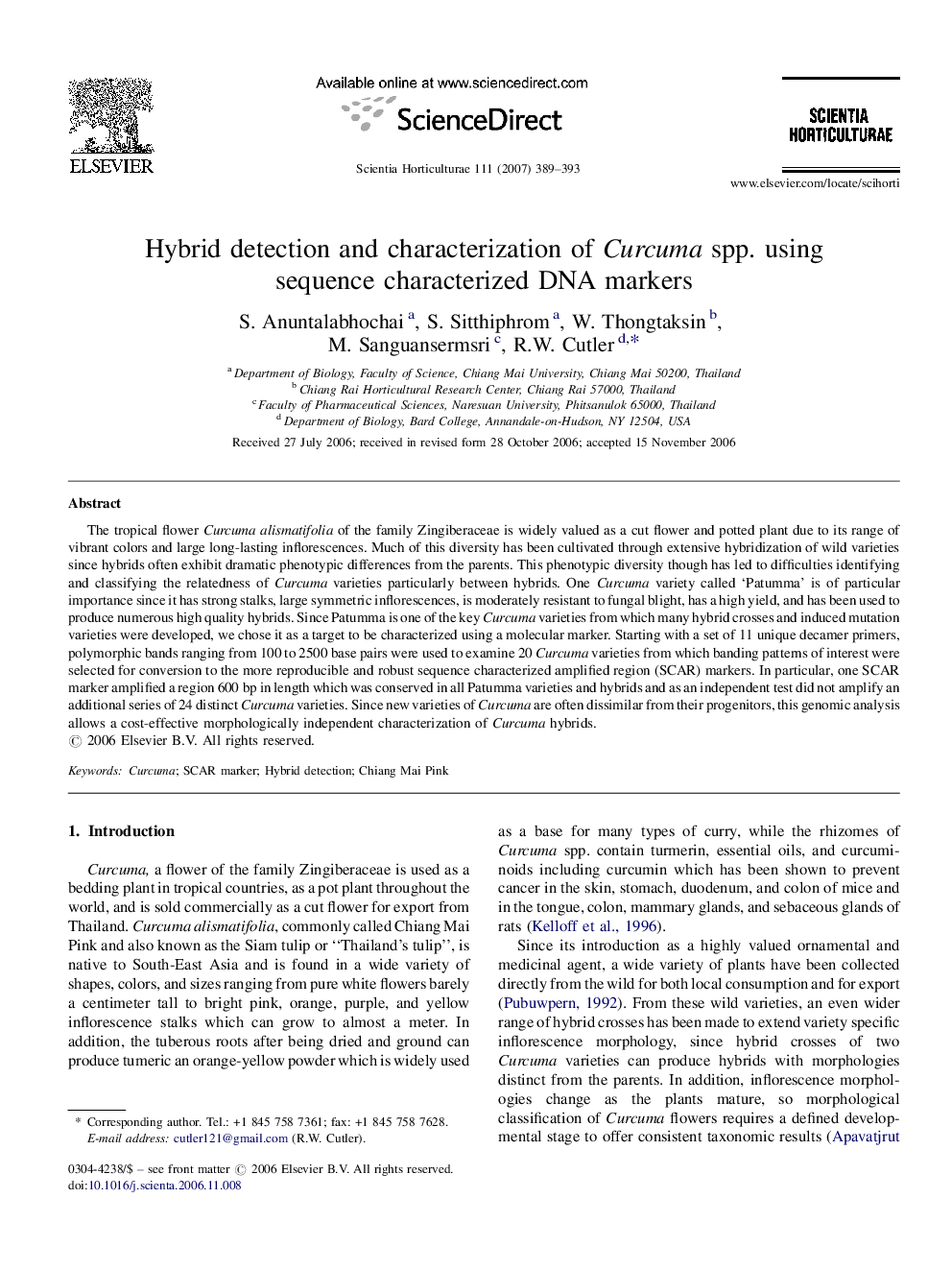| Article ID | Journal | Published Year | Pages | File Type |
|---|---|---|---|---|
| 4569811 | Scientia Horticulturae | 2007 | 5 Pages |
The tropical flower Curcuma alismatifolia of the family Zingiberaceae is widely valued as a cut flower and potted plant due to its range of vibrant colors and large long-lasting inflorescences. Much of this diversity has been cultivated through extensive hybridization of wild varieties since hybrids often exhibit dramatic phenotypic differences from the parents. This phenotypic diversity though has led to difficulties identifying and classifying the relatedness of Curcuma varieties particularly between hybrids. One Curcuma variety called ‘Patumma’ is of particular importance since it has strong stalks, large symmetric inflorescences, is moderately resistant to fungal blight, has a high yield, and has been used to produce numerous high quality hybrids. Since Patumma is one of the key Curcuma varieties from which many hybrid crosses and induced mutation varieties were developed, we chose it as a target to be characterized using a molecular marker. Starting with a set of 11 unique decamer primers, polymorphic bands ranging from 100 to 2500 base pairs were used to examine 20 Curcuma varieties from which banding patterns of interest were selected for conversion to the more reproducible and robust sequence characterized amplified region (SCAR) markers. In particular, one SCAR marker amplified a region 600 bp in length which was conserved in all Patumma varieties and hybrids and as an independent test did not amplify an additional series of 24 distinct Curcuma varieties. Since new varieties of Curcuma are often dissimilar from their progenitors, this genomic analysis allows a cost-effective morphologically independent characterization of Curcuma hybrids.
